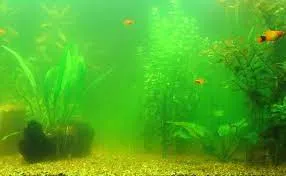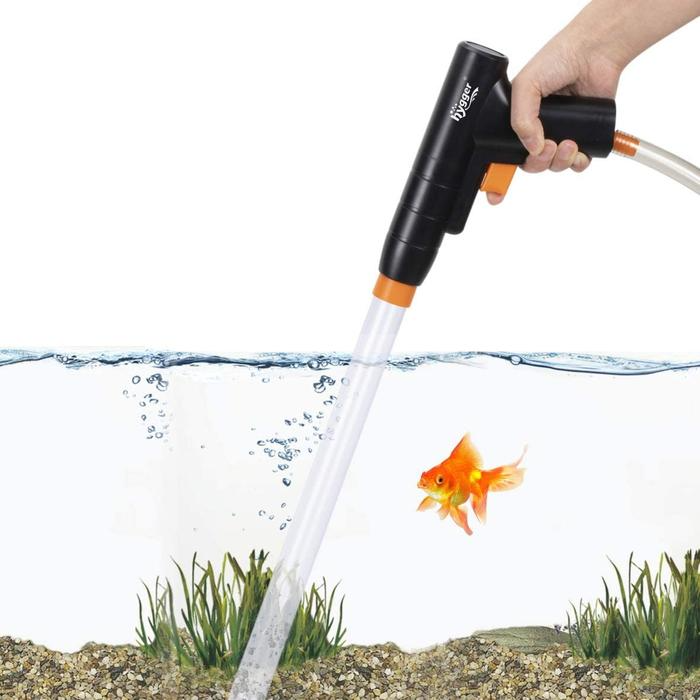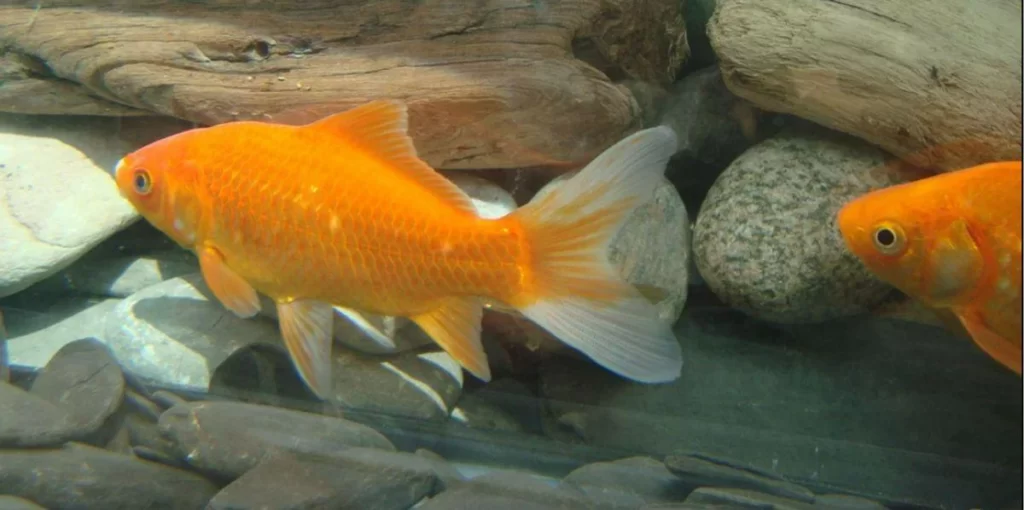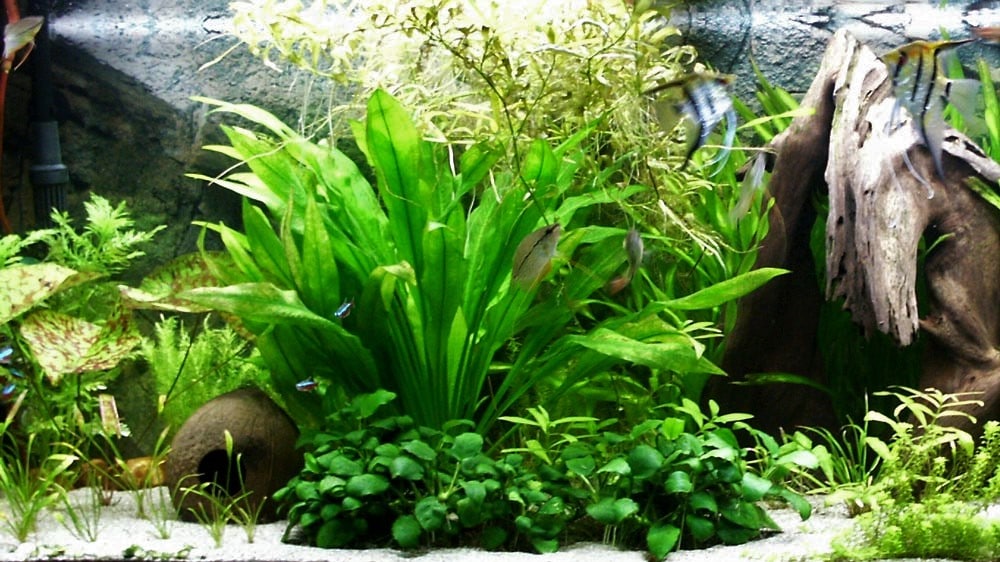Every aquarist wants to feed the best food to their pets in the aquarium; whether he is a beginner or experienced. Aquarists are always in search of top-class food, the condition is not to be only pleasing but also highly nutritional and healthy to their life span.
Here, we discuss the bloodworms for the fish tanks; they are found in marine waters and come in 3 distinctive types. All the types are equally appropriate with slight differences. It is one of the many foods for the fishes in the aquarium. It comes with a worldwide demand as it has several characteristics that have scientifically proven healthiest for fish. Some aquarists face problems in feeding their pets if they are aggressive. For those species, bloodworms work great; we can say it works like magic!
Most people misunderstand bloodworms and buy some general species of worm. Whereas, you should understand the difference to have the right thing, because there are options you can have both freezes, live, or frozen. In the following guidelines related to bloodworms for fish tanks, we will discuss the details, including facts and suggestions.
Overview of Bloodworms
- Scientific name: Glycera
- Group: Polychaetes
- Common name: Bloodworms
- Size: Can grow up to 14 inches
- Color: Sharp Red
- Type: Omnivore
Bloodworms are found in marine water, with all of its types. They have an elastic thread-like body that can grow up to 12-13 inches in length. In appearance, they look extra thin with bright red color. That bloody red is due to iron protein in their skin tissues. They can swim in less oxygen in an aquarium without any suffocation due to the hemoglobin in their body. Naturally, they can be found in pools or giant size tanks due to their auto production system.
The in-tank food chain has significant importance. It perfectly digests and gets appreciation from your pets through its demands. You can feed it to any fish species without any restriction. Other than fish, you can provide worms to other species include; frogs, shrimps, tetras, etc.
For the security of your pets, you must know that bloodworms could be venomous, so if you are buying them from a market, ask the seller to remove the venomous from them. The reason is to provide the nutrients, not harm. Usually, most bloodworms come from still water in streams or old area located pools.
Types of Bloodworms for Fish Tank
There are 3 types of bloodworms for fish tanks available in the market. So choose the one which is most suitable for your aquarium.
Freeze-dried Bloodworms:
So, freeze-dried has further two types; Omega and San Francisco. They individually work according to the tank size.
- Omega bloodworms are good for small-sized aquariums. They produce no fuss in water and have limited characteristics.
- San Francisco works great for big-size tanks as it ensures to provide nutrients all over the aquarium effectively.
Before adding them to the aquarium, prepare them gently while soaking them in lukewarm water, by which they become more nutritious and slimy. This structure helps fishes to swallow them easily without stocking in their mouth.
Overall, they are very convenient to found; you can quickly get them in any local market or online store to identify the type and have it.
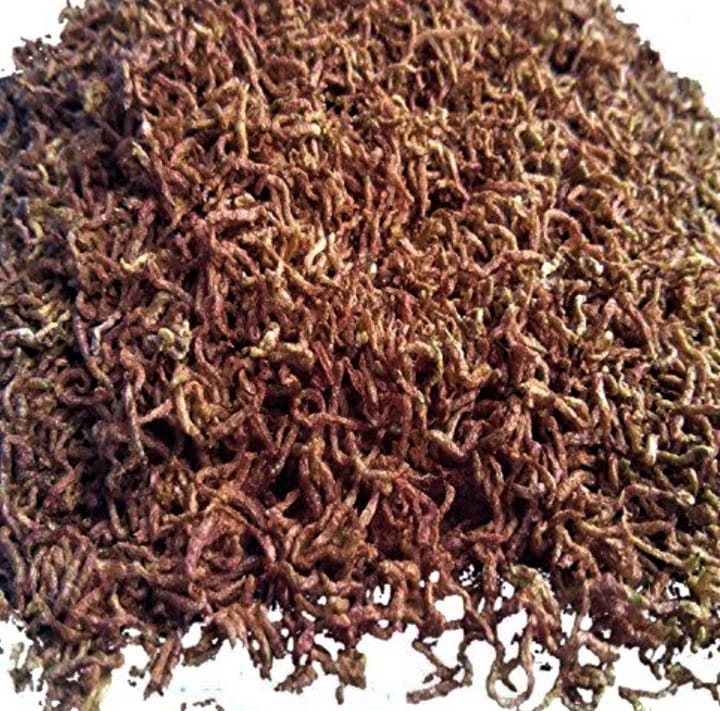
Frozen Bloodworm:
Frozen bloodworms are further come in distinctive forms that include frozen boxes and minor-sized sheets. You can have them in freeze form for more than six months without any loss or changes in it from the date of buying.
The best fact to choose frozen over other types of bloodworm is that it won’t encourage any other parasites to take place in the tank. It also prevents infectious diseases and other pest problems. So don’t worry regarding any health issue of your pet in the tank due to bloodworm.
While feeding your fishes makes sure that your bloodworms for the fish tank aren’t frozen. Otherwise, it can cause some severe harm to your pets. The causes include some diseases, skin infections, throat problems, and even death to the unhealthy species.
The best way is to unfreeze them by applying some suitable methods. You can suitably take a bowl or super small tank fill it with lukewarm water. Place the frozen worms in that container, give them some time to lose their bodies, and come in the original form. After that, you can strain and transfer them into the aquarium, and the dinner is ready for your fish.

Live Bloodworms:
If you want to have a super healthy experience for your fishes, then a live bloodworm is the best recommendation in all of its types. You can’t beat the benefits of live worms than any other. The live ones come with a complete package. It delivers high-quality nutrients with nest regularity of blood. The process could be a bit difficult but in front of such benefits.
The life span of a fresh bloodworm varies from 10-12 days and is best for use in the first 4-5 days. You can find them locally in any market, but you are required to buy them repeatedly for fresh use. Some people try to stock them in freezers or low-temperature boxes for a more extended period, which is entirely wrong and prohibited.
Make sure that you are purchasing healthy worms because most of the time, sellers do a scam by not informing the actual condition of the product, through which you can bring the diseases and deadly infections to your aquarium. So, basic research is essential before having them.
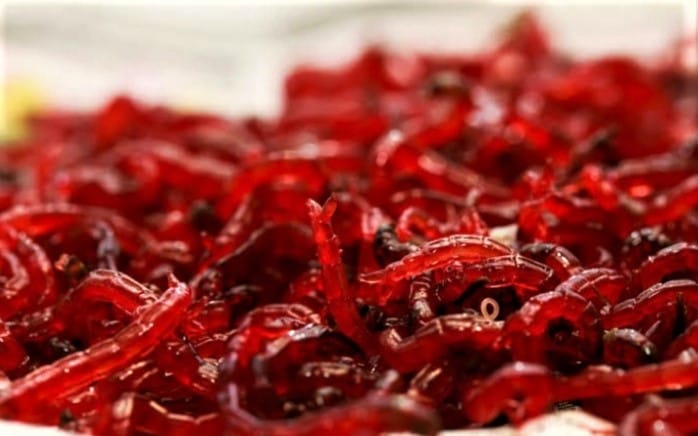
Precautious Tips:
Remember not to over-feed your pet as it will not be good in maximum quantity to your species. A limit should be applied and consistent on the same amount to avoid disturbing their stomach. Also, try to keep a check on the eating schedule and time of fish. According to the observations, it is hazardous to leave the leftover food in an aquarium with fish. It will later convert into poison, harm the water quality, and leave a more significant impact on aquatic species’ lives.
Usually, fish takes around 2-3 minutes to complete their food. You can eliminate all the leftover bloodworms in a tank by using a scratched plastic glove to ensure a safer and healthy environment in tanks.
Perfect for Fussy Eaters
Most aquarists misunderstand that the fishes can’t be picky while eating, just like dwarf frogs or other aquatic organisms. However, there are some species of fish that are super particular while eating. It might be a joke for most beginners, but it’s a fact.
For those searching for the perfect food items of flakes for their species, bloodworms for a fish tank is an ideal choice for a conclusive diet. These worms are not pocket-friendly, but if you want to give high nutritious food to your species, that goes for it.
According to analysis, that more than 99% of fish species immensely appreciate having bloodworms as their lunch. Most of the time, aquarists get at risk, but you are more than safe with the best solution in this situation. We can guarantee you it would make a great deal without any loss.
Species That Consume Bloodworms
Bloodworms for fish tanks have a good demand among multiple fish species owners. The super fact is that it comes with many nutrients, essential oils, and properties to maximize blood regulation in fishes. Apart from its look, it feels incredibly delicious for a fish. Remember that it is suitable only if your species is carnivore or omnivore.
Let’s be realistic. Depending entirely on bloodworm can be dangerous for its daily usage. It’s better only to use it as an energy-boosting supplement. Bloodworm does not consist of vitamins or amino acids that are also necessary to take place in your pet’s diet to keep it healthy and long-living.
We have mentioned some of the common fish species that can easily consume bloodworms:
- Tetra
- Guppies
- Mollies
- Gouramis
- Angelfish
- Betta Fish
- Dottyback
- Loaches
- Corydoras
- Cardinal Tetra
- Discus
- Catfish
- Butterfly-fish
- Cichlids
How Many Bloodworms Are Required to Feed?
You should also consider their consumption routine for their happy and satisfied life. Some of the species need bloodworms as food every 2-3 times a week, twice a month, and even some need 2-3 times daily.
You can’t rely on others’ pet schedules. Try to find out the stomach requirement of your fish for the correct consumption. As a professional, note the time of your pets while eating those who take the minimum time or starts late. They need fewer worms, whereas if they finish it within 2 minutes conclusively states you have to give them food daily. Other than this, consult a professional for better results and to avoid any casualty.
Is Bloodworm Dangerous For Your Fish?
Yes, bloodworms are dangerous for your fish, but on the same side, a professional quote is a misconception that a bloodworm is dangerous. However, while using, there are some conditions to follow by which you can avoid the diseases and deadly infections. It depends upon the consumer.
Also, when worms become mature enough, they are less likely to cause any harm or disease to your pet. If they are alive, their maximum life span is around 10-11 days, and off-course, they would get mature initial days of the first week. And for dried or frozen, we would suggest you eliminate the remaining worms after the use from the tank immediately as overeating is dangerous for your fish.
Healthy Suggestion
This guide related to bloodworms in the fish tank has come to an end. We have talked about the entire details of bloodworms for the fish tanks and essential facts regarding the fish. Bloodworm is not a significant danger as it is used to assume. We would say it works great as a supplement to improve the performance and life quality of fish. You must go for it following the above-mentioned precautions.
FAQs Related to Bloodworms for Fish Tank
Okay, that’s a most asked question; the mature bloodworm is not dangerous to your fish. Whereas, if they are immature, they may cause some diseases, but most of the time, the results have come positive. If you would increase their number in the tank, strictly prohibited would cause deadly problems to your pet.
While growing and at their production period, they initially are pink and later converted into dark red. This variation in bloodworm’s color is due to the enhancement of hemoglobin in its bodies. In contrast, this hemoglobin is the reason that permits them to live in minimum oxygen available in the tank.
It could be extremely dangerous, as most bloodworms are highly venomous only if they go wild. While researching worms by the scientists, they found out that the reason behind chemical or allergic reactions was the venom in worms. They are very toxin if human touches it, and same goes for fishes until they are alive.
There are some basic signs through which you can know if your pets are hungry or not:
• Your pet would be searching all over the tank while roaming over gravels.
• Impatiently waiting for their owner at the upper surface of the tank.
• Sudden changes in fish behavior, such as annoying thaw or laziness.
• Visible difference in their body.

